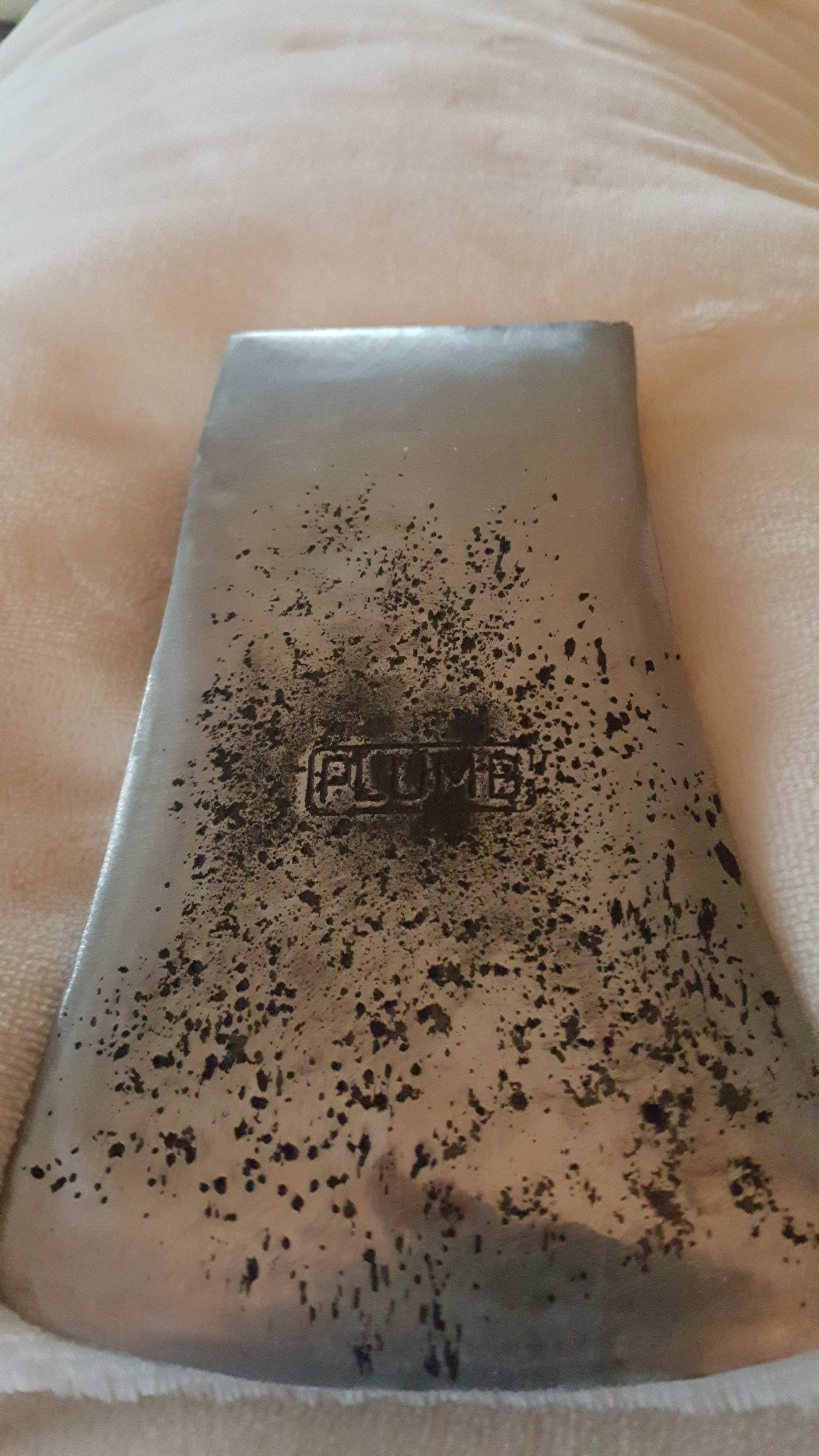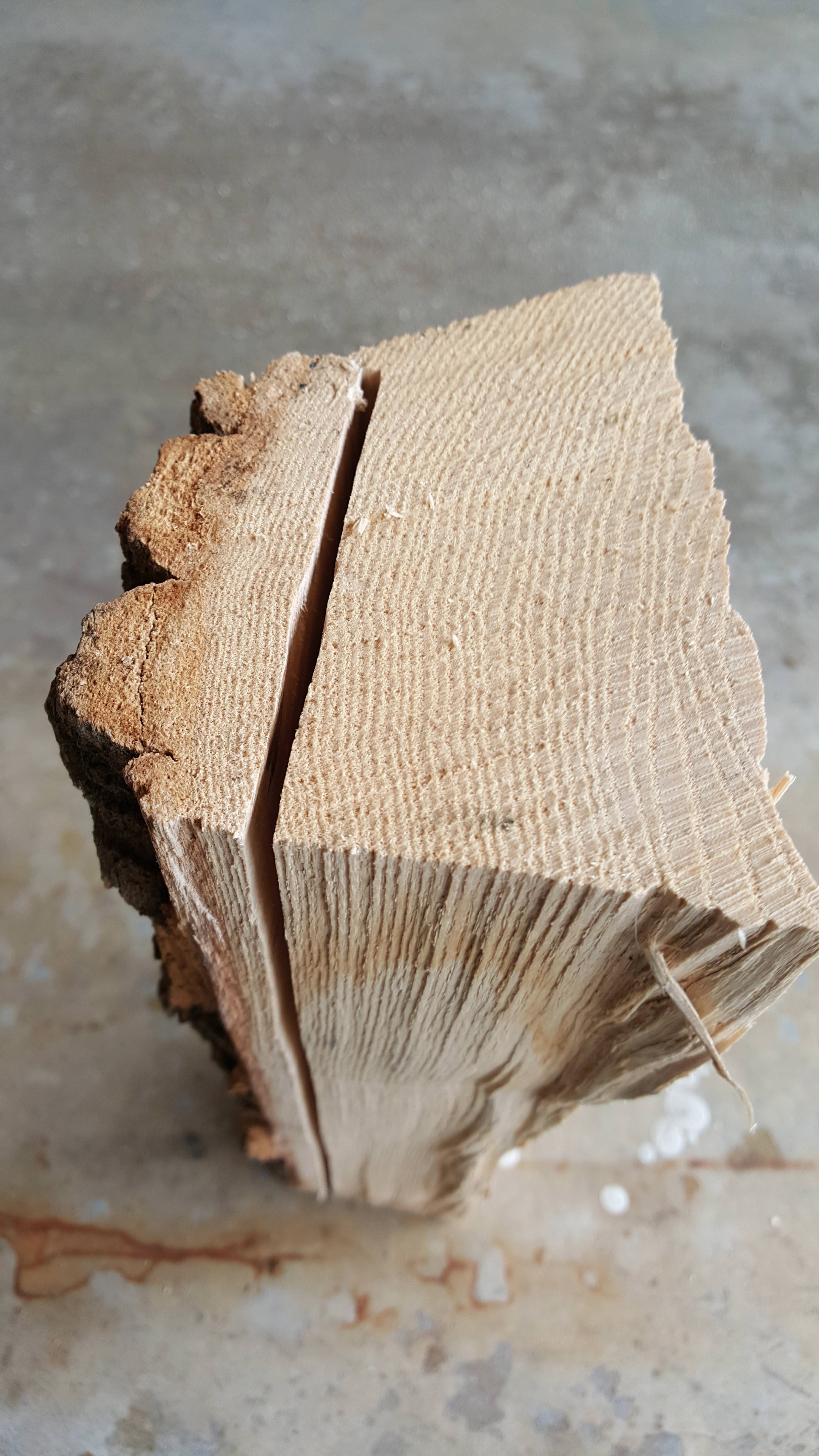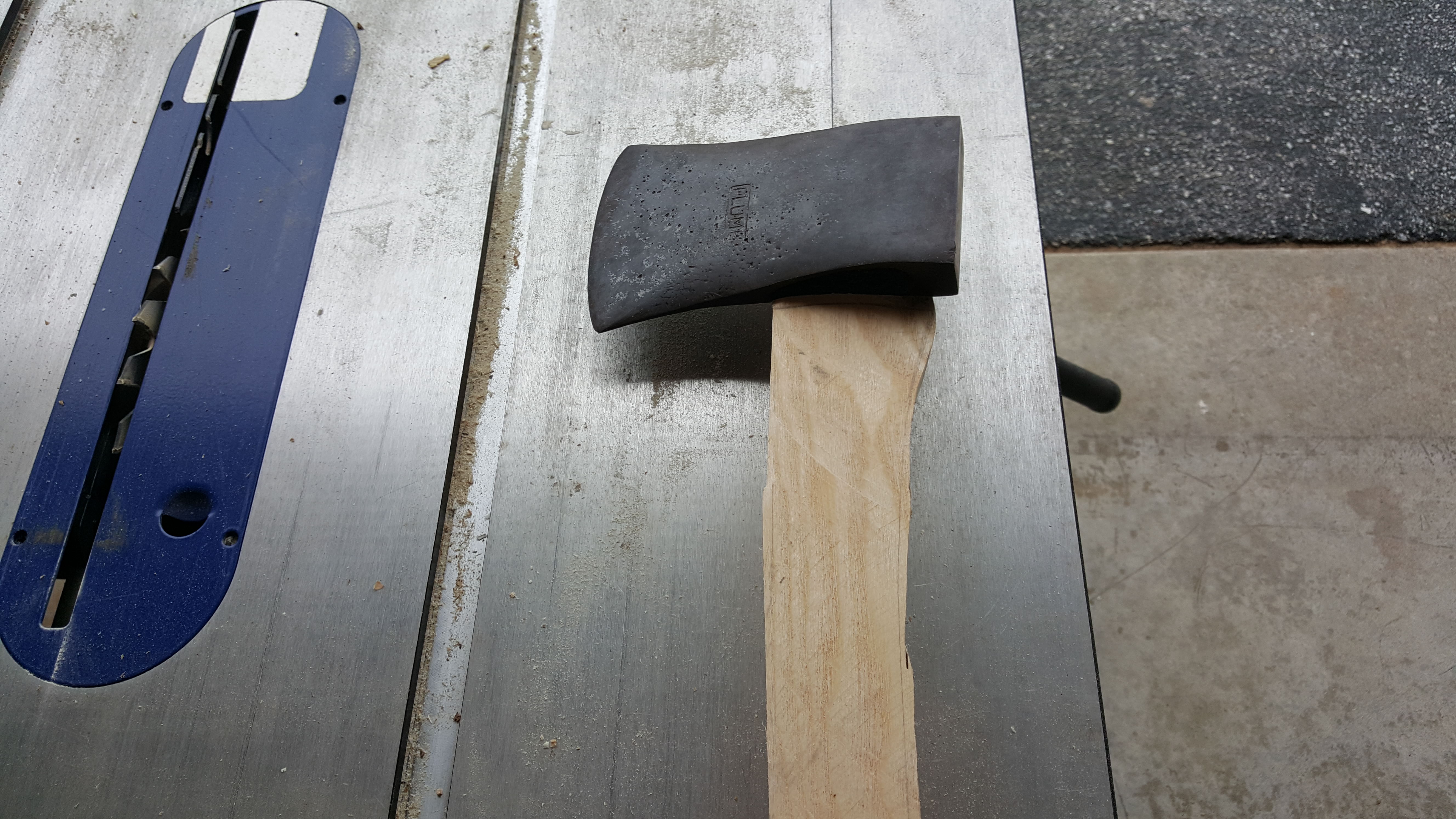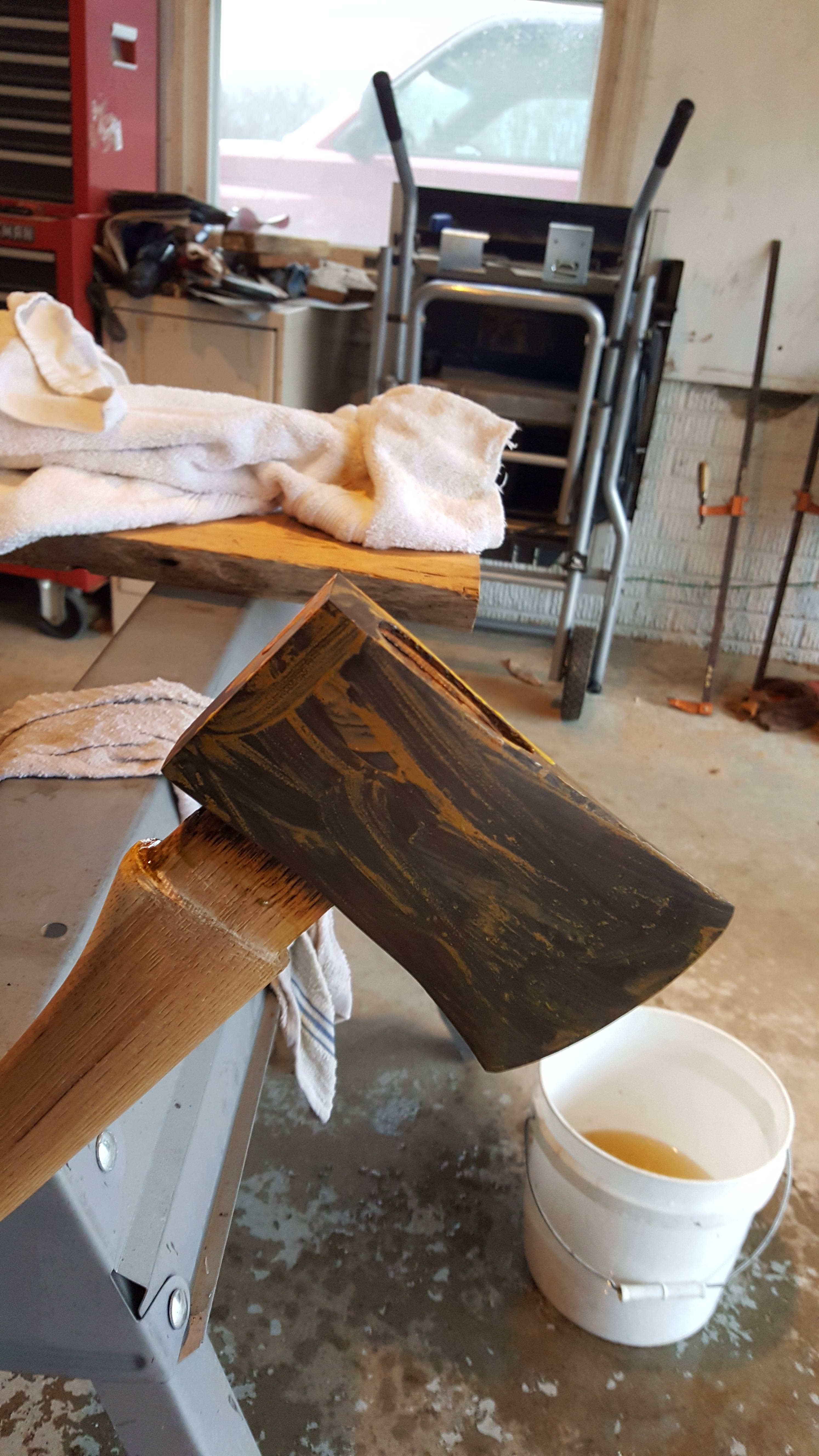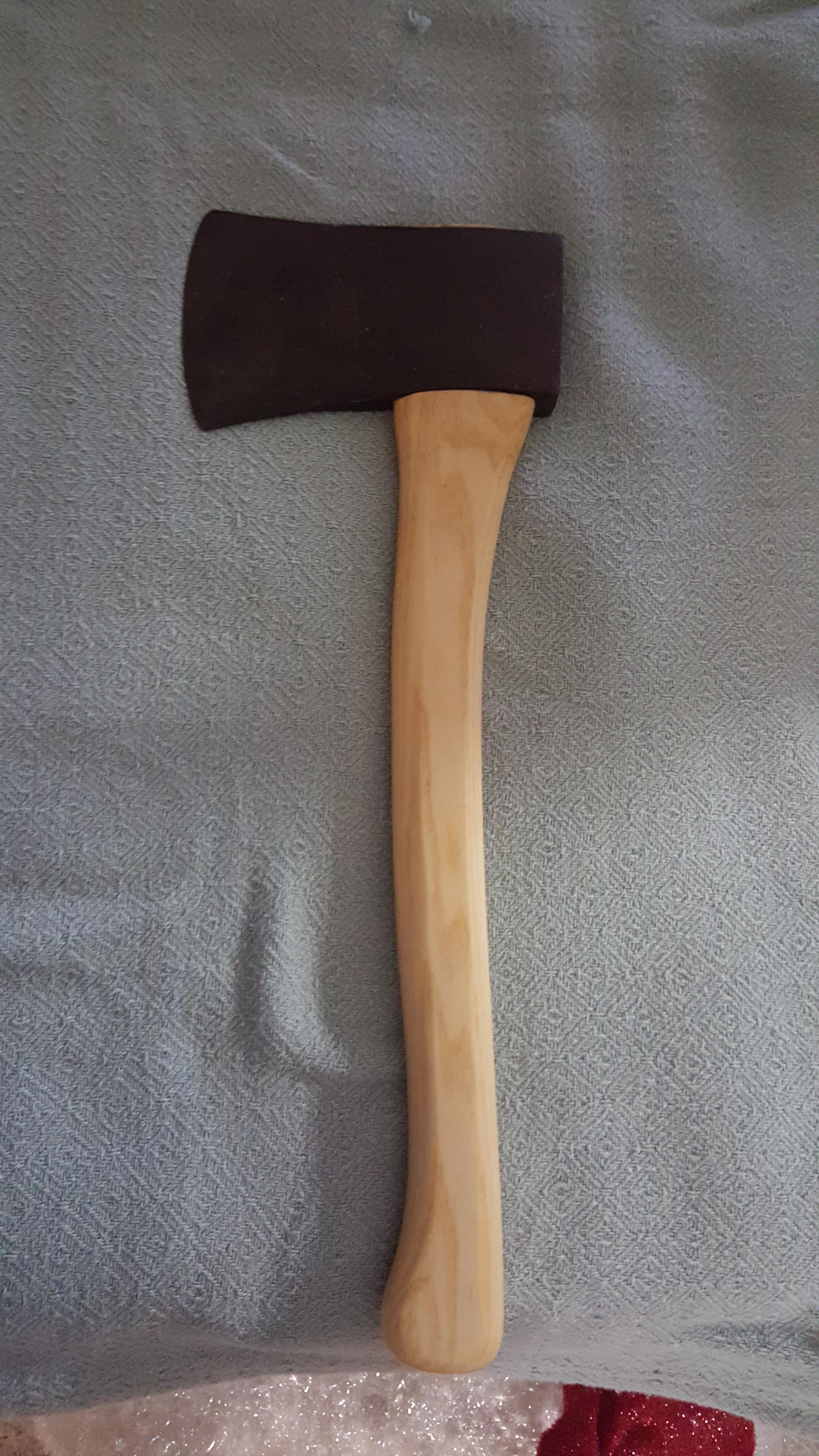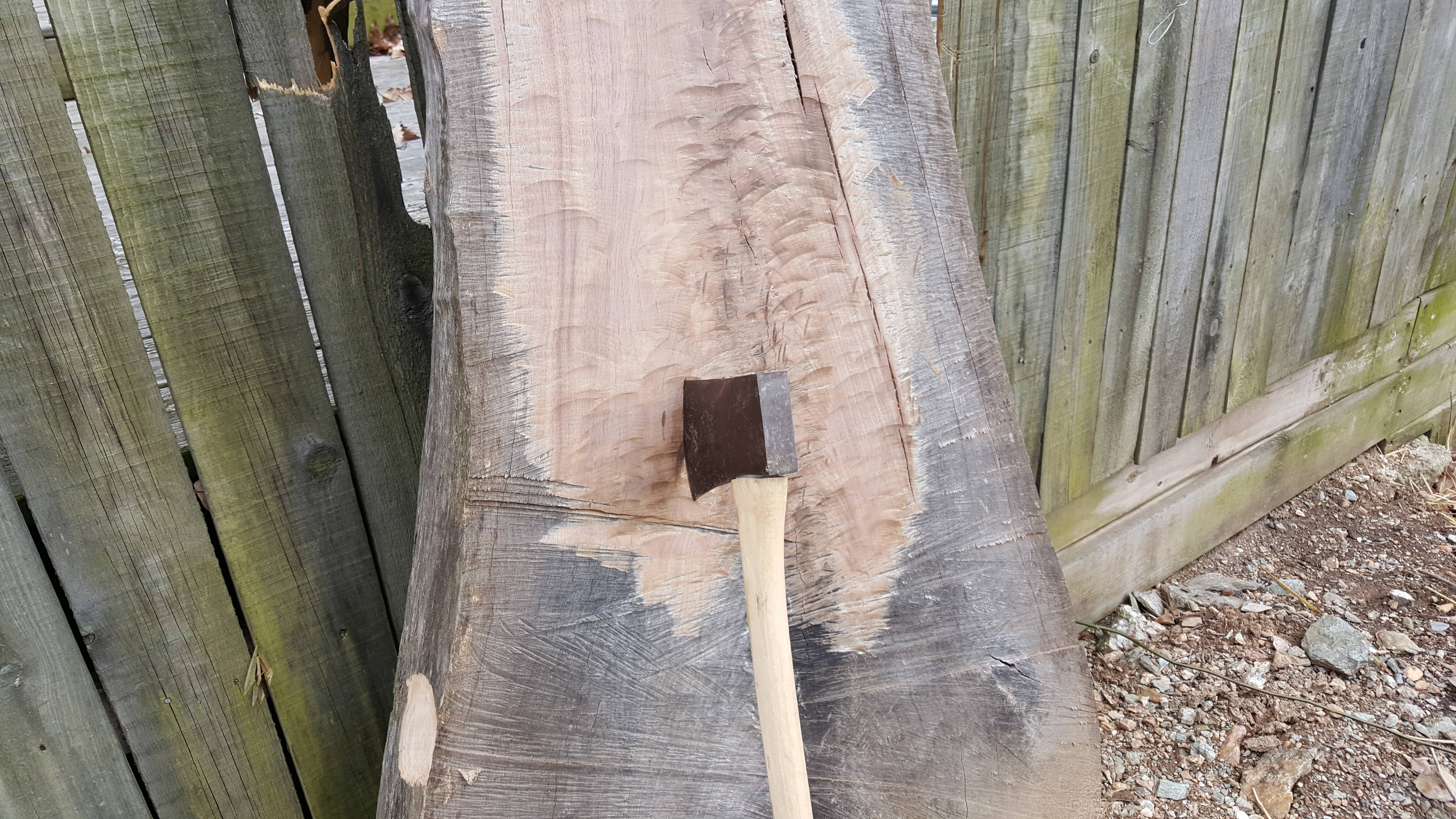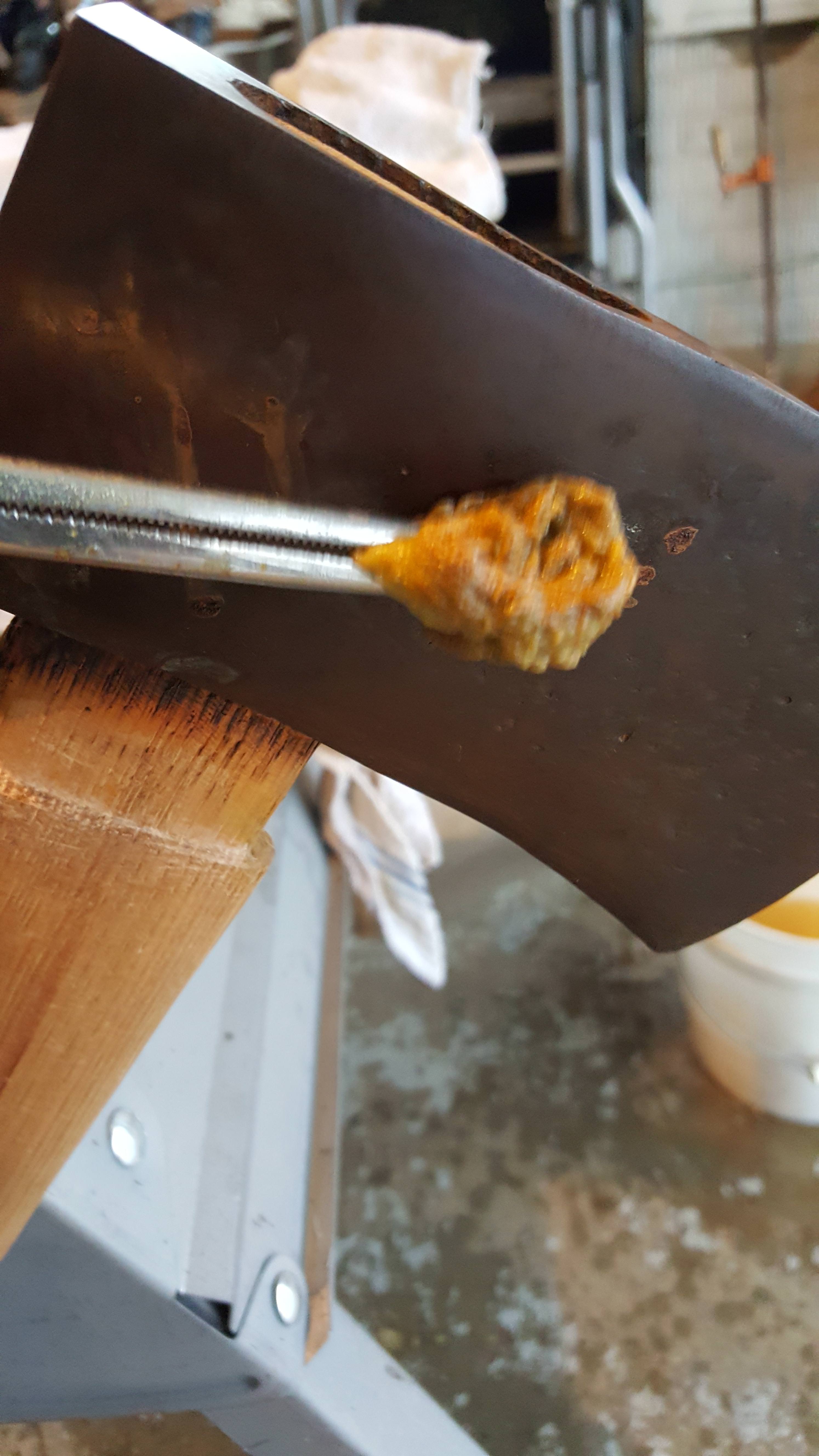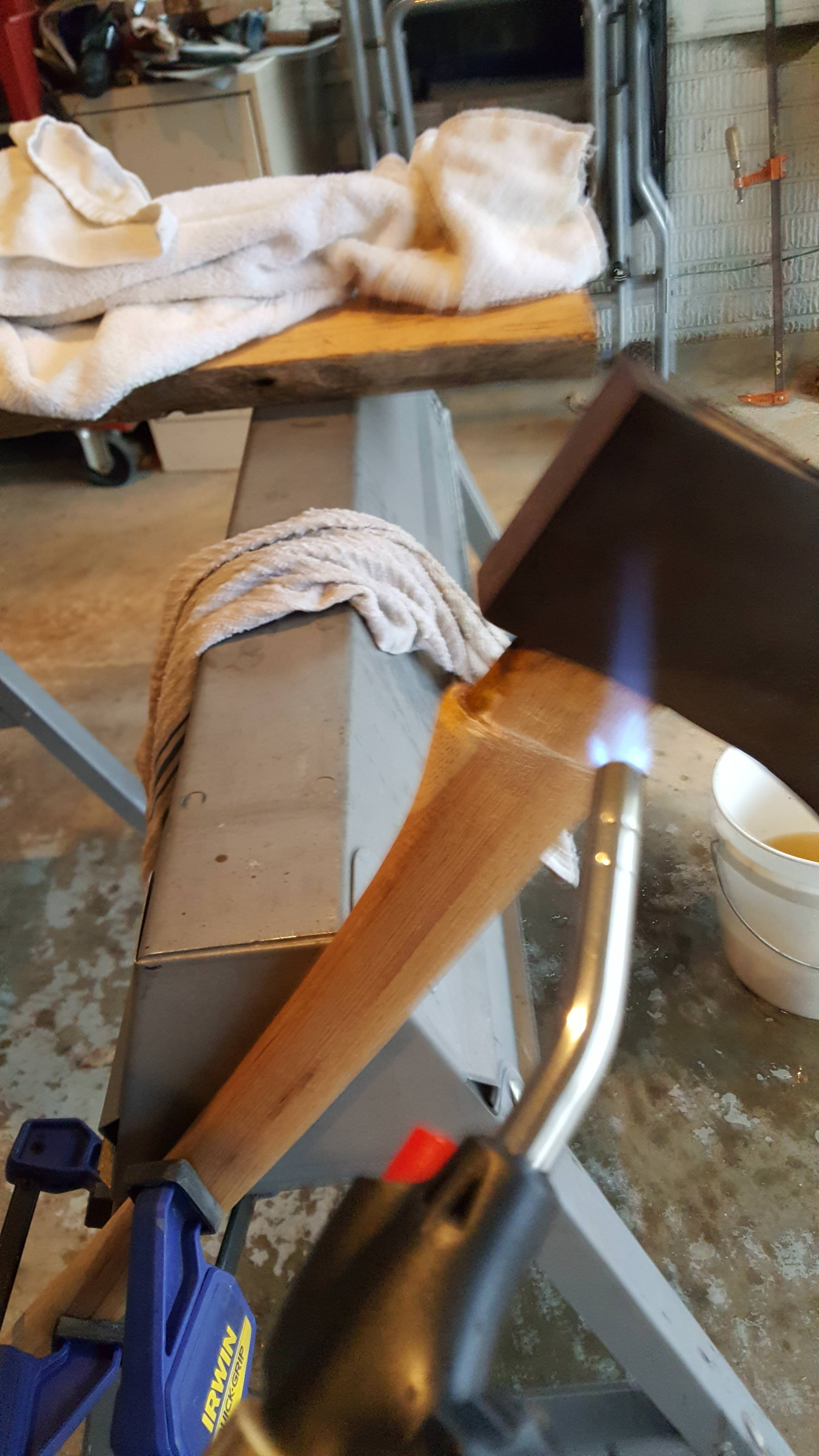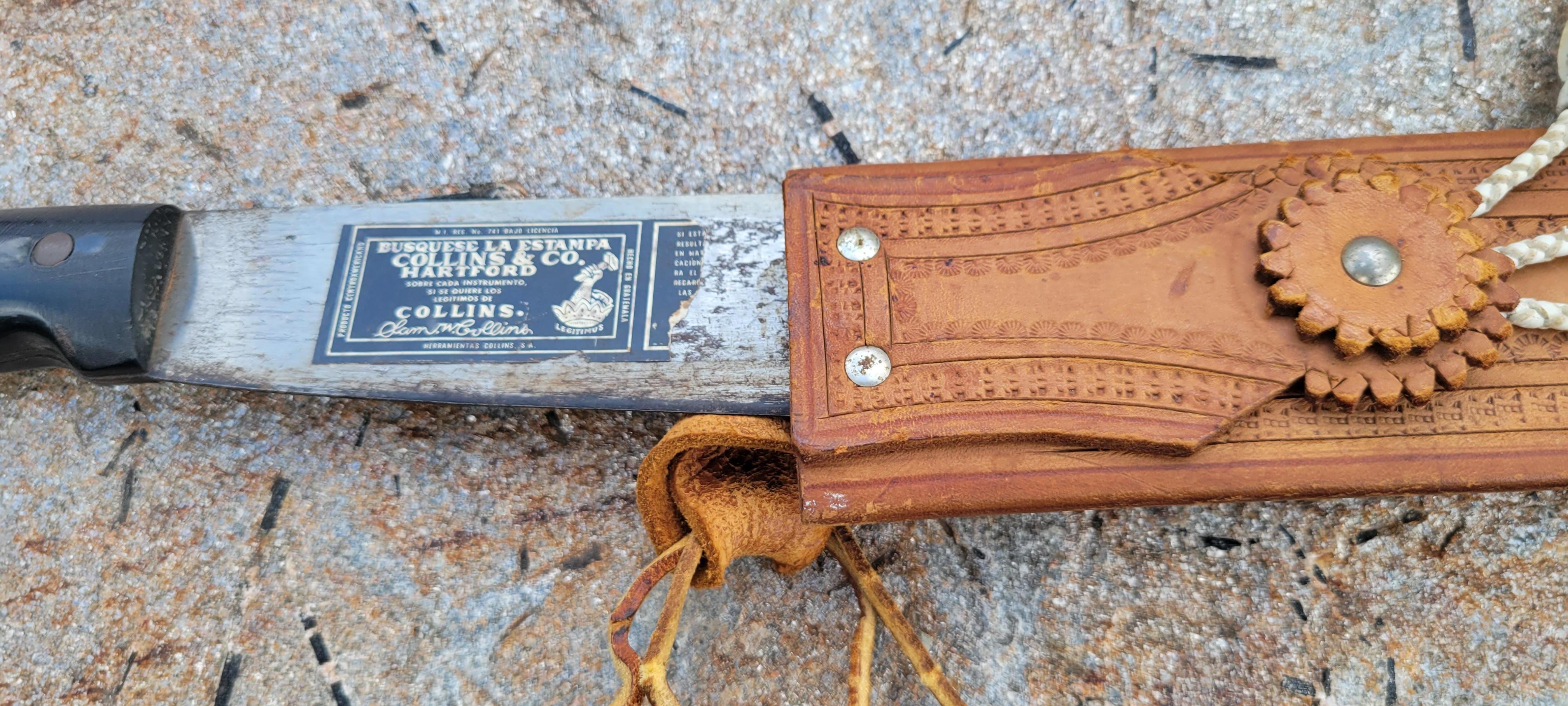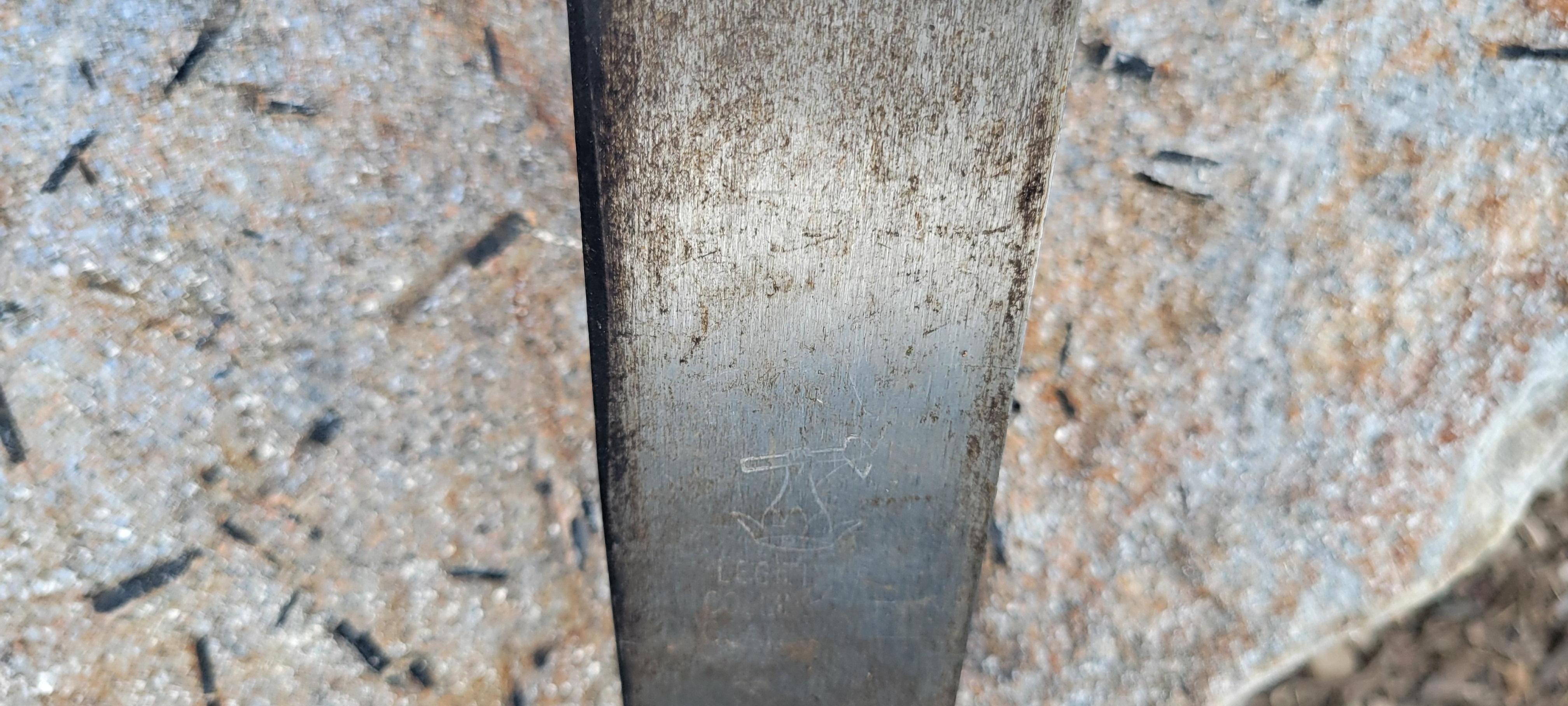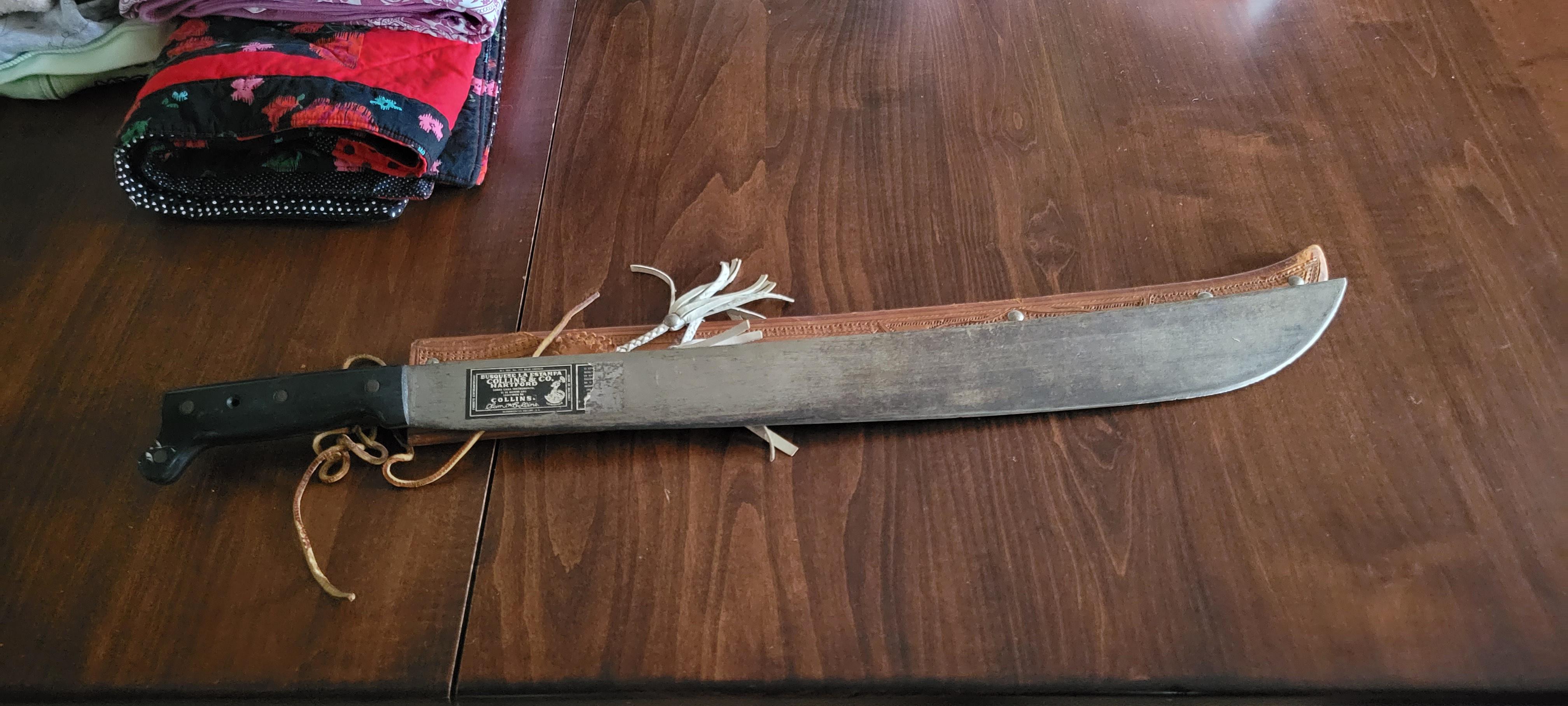I use electrolysis... I started doing so when people started giving me their grandfather's or father's hand tools. They did this because nobody knew what most of them were for or thought power tools were mandatory for even the simplest of tasks... Ugh! Anyhow, neglect was often a problem whether the tools were fine machinist tools or sledge hammers with broken handles. I recently did an axe my son found in the woods and a hatchet head he got at a yard sale. The woods find axe's handle was almost entirely rotted away. Both heads went through two sessions of electrolysis. The first loosened the big chunks of rust. After a wire brushing they went back for another session. This time I finished the process with a couple trips through my ultrasonic cleaner with Simple Green, and a rub down with a scotch bright pad. to remove the dark dirty film left from the electrolysis. Both heads came out great.What is everyone’s preferred/favorite/best method of restoring an axe head?
Wire wheel on a grinder? Vinegar bath? Evaporust? Electrolysis?
For those that have been doing this for years, does one way last longer against rust? Or once you coat it with oil, does it really even matter?
Benefits of electrolysis are that it is a self limiting process... once the rust is gone it stops. Another is that it doesn't remove sound metal the way grinders, sanders, needlers, acids, and wire wheels can. It also reaches surfaces that are difficult to reach with abrasives, e.g., the eye of an axe, cracks in the poll. Let's face it, people use them for hammers and strike them with hammers for splitting, so finding and cleaning the damage is important... as is removing mushrooms from polls. Electrolysis is also a passive process in that you set it up and walk away while the vast majority of the work is done.
Regarding preservation after cleaning. My observations are that by getting rid of all the corrosion, including inside the eye, hairline cracks in the poll, inside the rough surfaces often found on the edge of the beard, etc., it allows preservative oils to reach all sound surfaces. I typically coat not only the handles but the axe heads with boiled linseed oil at least annually and I wipe the heads down with WD-40 after every use.
















